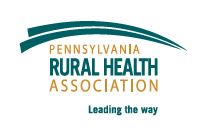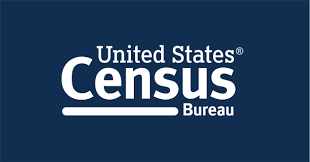- CMS: Medicare Program; Implementation of Prior Authorization for Select Services for the Wasteful and Inappropriate Services Reduction (WISeR) Model
- Public Inspection: CMS: Medicare Program: Implementation of Prior Authorization for Select Services for the Wasteful and Inappropriate Services Reduction Model
- CMS: Secretarial Comments on the CBE's (Battelle Memorial Institute) 2024 Activities: Report to Congress and the Secretary of the Department of Health and Human Services
- HHS: Patient Protection and Affordable Care Act: Marketplace Integrity and Affordability
- HRSA Announces Action to Lower Out-of-Pocket Costs for Life-Saving Medications at Health Centers Nationwide
- Public Inspection: HHS: Patient Protection and Affordable Care Act: Marketplace Integrity and Affordability
- Increased Risk of Cyber Threats Against Healthcare and Public Health Sector
- Eight Hospitals Selected for First Cohort of Rural Hospital Stabilization Program
- Announcing the 2030 Census Disclosure Avoidance Research Program
- CMS: Medicare Program; Hospital Inpatient Prospective Payment Systems for Acute Care Hospitals and the Long-Term Care Hospital Prospective Payment System and Policy Changes and Fiscal Year 2026 Rates; Requirements for Quality Programs; and Other Policy Changes; Correction
- CMS: Medicare Program; Hospital Inpatient Prospective Payment Systems for Acute Care Hospitals and the Long-Term Care Hospital Prospective Payment System and Policy Changes and Fiscal Year 2026 Rates; Requirements for Quality Programs; and Other Policy Changes; Correction
- CMS: Medicare and Medicaid Programs; Contract Year 2026 Policy and Technical Changes to the Medicare Advantage Program, Medicare Prescription Drug Benefit Program, Medicare Cost Plan Program, and Programs of All-Inclusive Care for the Elderly; Correction
- CMS: Medicare and Medicaid Programs; Contract Year 2026 Policy and Technical Changes to the Medicare Advantage Program, Medicare Prescription Drug Benefit Program, Medicare Cost Plan Program, and Programs of All-Inclusive Care for the Elderly; Correction
- CMS: Medicare Program; Prospective Payment System and Consolidated Billing for Skilled Nursing Facilities; Updates to the Quality Reporting Program for Federal Fiscal Year 2026
- CMS: Medicare Program; FY 2026 Hospice Wage Index and Payment Rate Update and Hospice Quality Reporting Program Requirements
New Rural Health Value Website and Resources Available: Rural VBC–The Payer Perspective and TEAM Model Summary

The Rural Health Value team is pleased to share that we have launched a redesigned website and logo. While we have a new look – you will continue to find trusted resources that facilitate the transition of rural healthcare organizations, payers, and communities from volume-based to value-based health care and payment models. Please take a look! On the new website you will find two new resources.
- Rural Value-Based Care – The Payer Perspective, Rural Health Value Summit Report. The Rural Health Value team convened professionals and executives from national and regional health care payer organizations to share and explore insights, innovations, successes, and challenges in rural health value-based care (VBC) contracting. This report summarizes challenges and solutions followed by suggestions for rural health care organization leaders from the Summit participants.
- A one-page summary of CMS’s Transforming Episode Accountability Model (TEAM). TEAM is a mandatory, episode-based, alternative payment model, in which selected acute care hospitals will coordinate care for people with Traditional Medicare undergoing one of the surgical procedures included in the model and assume responsibility for the cost and quality of care from surgery through the first 30 days after the Medicare beneficiary leaves the hospital. Of the 741 hospitals identified for mandatory participation, 124 (16.7%) are in non-metro counties. More from CMS on TEAM.
This summary is part of Rural Health Value’s Catalog of Value-Based Initiatives for Rural Providers. The catalog summarizes rural-relevant, value-based programs currently or recently implemented by the Department of Health and Human Services (HHS), primarily by the Centers for Medicare & Medicaid Services (CMS) and its Center for Medicare & Medicaid Innovation (CMMI).
Rural Health Value facilitates the transition of rural healthcare organizations, payers, and communities from volume-based to value-based health care and payment models. Visit www.ruralhealthvalue.org or contact Clint MacKinney, MD, MS, Co-Principal Investigator, clint-mackinney@uiowa.edu.
Request for Proposals: Partner for Appalachian Leadership Institute

ARC is seeking proposals from organizations, including non-profits, institutions of higher education, and other stakeholders to work in partnership with the ARC Academies & Institutes team to execute the Appalachian Leadership Institute (ALI), a leadership development program for people who live and/or work in Appalachian and are passionate about helping their communities thrive.
Launched in 2019, the Appalachian Leadership Institute is a leadership training opportunity that equips Appalachian community leaders to use economic development as a tool to drive positive change. Since its launch, ALI has trained approximately 200 Appalachian leaders.
ALI is a collaborative effort between the Appalachian Regional Commission and the Organization that serves as our curriculum partner. The selected organization will provide expertise on content and curriculum planning under the leadership and approval of ARC. More information on the breakdown of roles and responsibilities can be found in the RFP.
Proposals must describe the strategy for promoting and implementing action-oriented leadership in the Appalachian Region, to include, but not be limited to, the following major components under the ALI umbrella:
- A program aimed at 40 leaders from Appalachia’s public, private, and non-profit sectors.
- Curriculum and sessions focused on ARC’s five investment areas.
- Case study work that reflects both the opportunities and challenges in the region.
- Proposed areas of training in leadership skills development.
- Alumni Network Programming
- Curriculum and sessions that build upon the core curriculum of the program
- Proposed strategy for network building and continued growth
Key dates are outlined below. If you have any questions, please reach out to Academies & Institutes Program Manager Jessica Mosley at leadershipRFP@arc.gov.
RFP open date: November 7, 2024
Questions due: December 13, 2024
Answers posted on arc.gov: December 19, 2024
Proposal due date: January 10, 2025
Interviews: February 24-28, 2025
Selection date: March 10, 2025
Contract period: August 1, 2025 – July 31, 2026
Gov. Josh Shapiro Proclaims November 18-22, 2024 Rural Health Week in Pennsylvania
 In an effort to draw attention to the wide range of issues that impact rural health, Gov. Josh Shapiro has declared November 18-22, 2024, as Rural Health Week in Pennsylvania at the request of the Pennsylvania Rural Health Association (PRHA) and the Pennsylvania Office of Rural Health (PORH).
In an effort to draw attention to the wide range of issues that impact rural health, Gov. Josh Shapiro has declared November 18-22, 2024, as Rural Health Week in Pennsylvania at the request of the Pennsylvania Rural Health Association (PRHA) and the Pennsylvania Office of Rural Health (PORH).
Gov. Shapiro made the proclamation to promote awareness of the full range of issues that impact rural health care throughout the Commonwealth and the health status of rural Pennsylvanians. Nationally, Pennsylvania ranks as one of the states with the highest number of rural residents, with 26 percent of Pennsylvanians residing in rural areas. In recognition of Pennsylvania’s diverse rural needs, the Commonwealth has supported the development of the Center for Rural Pennsylvania, the Pennsylvania Office of Rural Health, and other agencies and initiatives to address the needs of rural Pennsylvanians.
The week encompasses November 21, which is National Rural Health Day, established in 2011 by the National Organization of State Offices of Rural Health (NOSORH) to showcase rural America; increase awareness of rural health issues; and promote the efforts of NOSORH, State Offices of Rural Health (SORHs) and others in addressing those issues.
“Nearly 59.5 million Americans, including 3.4 million Pennsylvanians, live in rural communities,” said Lisa Davis, PORH director and outreach associate professor of health policy and administration at Penn State. “These small towns and communities continue to be fueled by the creative energy of citizens who step forward to provide a wealth of products, resources, and services.
Rural communities also face unique health care concerns: a lack of providers; accessibility issues, particularly in terms of transportation and technology; and affordability issues as the result of larger percentages of uninsured and underinsured citizens and greater out-of-pocket health costs. Rural hospitals and health care providers, which frequently are the economic backbone of the communities they serve, deserve special consideration so that they can continue to provide high-quality services and meet the needs of rural residents.”
To celebrate the work being done to achieve health care access and equity in Pennsylvania, PORH will present Pennsylvania Rural Health Awards during virtual ceremonies across rural Pennsylvania.
PORH was established in 1991 to enhance the health status of rural Pennsylvanians and strengthen the delivery and quality of care in the communities in which they live. Each year, the organization presents awards to recognize rural health programs and individuals who have made substantial contributions to rural health in Pennsylvania. To learn more about the Pennsylvania Office of Rural Health, visit porh.psu.edu.
PRHA is dedicated to enhancing the health and well-being of Pennsylvania’s rural citizens and communities. Through the combined efforts of individuals, organizations, professionals, and community leaders, the Association is a collective voice for rural health issues and a conduit for information and resources. More information can be found at paruralhealth.org.
CMS to Host Conference on Optimizing Healthcare Delivery to Improve Patient Lives

Scheduled for December 12, 2024! This free, virtual conference hosted by the Centers for Medicare and Medicaid Services will convene change makers from the healthcare community and federal government to share new ideas, lessons learned, and best practices to reduce administrative burden and strengthen access to quality care.
Click here for more information and to register.
Good Read: Implementation of SPD 15 in the American Community Survey

Earlier this year, the U.S. Office of Management and Budget (OMB) published the results of its review of Statistical Policy Directive No. 15 (SPD 15) and issued updated standards for maintaining, collecting and presenting race and ethnicity data across federal agencies. The updated 2024 SPD 15 requires the use of a combined race and ethnicity question, the addition of a new “Middle Eastern or North African” minimum reporting category, and the collection of detailed race and ethnicity responses.
Since then, programs across the U.S. Census Bureau have been assessing how and when to implement the updated race and ethnicity standards set by OMB in the 2024 SPD 15. We expect race and ethnicity data that align with the revised standards will enhance the entire range of Census Bureau data products that describe the demographic makeup and socioeconomic characteristics of our country and our diverse communities.
Read more.
Written by: Donna M. Daily, Division Chief, American Community Survey Office and Karen Battle, Division Chief, Population Division
New Report Available on Oral and Mental Health During and After Pregnancy

The CareQuest Institute for Oral Health released a report, “Oral and Mental Health During and After Pregnancy.” Pregnant people are at a higher risk of developing periodontal disease and caries. The report cites the need for better medical-dental integration in order to address whole-person health through pregnancy and postpartum periods.
New Brief Released on Minimally-Invasive Oral Care
Community Catalyst released a brief, “Minimally-Invasive Care: Policy Opportunities to Improve Dental Care Access and Affordability.” This resource provides an overview of state-level policies advocates can push for to ensure communities have access to comprehensive dental services, including minimally-invasive care, as well as federal policy considerations that will support its availability.

CMS has announced the final rules for the 2025 physician fee schedule, the hospital outpatient prospective payment system (OPPS) and the Ambulatory Surgical Centers. Within these rules, CMS is finalizing new coding and payment policies for advanced primary care management services, advancing maternal safety standards, removing barriers to expand access to care for those formerly incarcerated and others in underserved communities, and setting policies to reduce the use of opioids and to increase access to high-cost drugs in tribal communities.
Physicians will see finalized average payment rates reduced by 2.93% in CY 2025 compared to the average payment rates for most of CY 2024, while payment rates for hospital outpatient and ASC services will increase by 2.9% in CY2025.
You can find more at the links below. Please contact me at (insert) with questions or if you’d like to learn more.
FINAL FULL PACKAGE: Calendar Year (CY) 2025 Physician Fee Schedule (PFS) Final Rule CMS-1807-F
Web links:
- Press Release: https://www.cms.gov/newsroom/press-releases/hhs-finalizes-physician-payment-rule-strengthening-person-centered-care-and-health-quality-measures
- PFS Fact Sheet: https://www.cms.gov/newsroom/fact-sheets/calendar-year-cy-2025-medicare-physician-fee-schedule-final-rule
- MSSP Fact Sheet: https://www.cms.gov/newsroom/fact-sheets/calendar-year-cy-2025-medicare-physician-fee-schedule-final-rule-cms-1807-f-medicare-shared-savings
- QPP Fact Sheet and FAQs: https://qpp-cm-prod-content.s3.amazonaws.com/uploads/3057/2025-QPP-Policies-Final-Rule-Fact-Sheet.pdf
- IRA Fact Sheet: https://www.cms.gov/inflation-reduction-act-and-medicare/inflation-rebates-medicare
- Federal Register: https://www.federalregister.gov/public-inspection/2024-25382/medicare-and-medicaid-programs-calendar-year-2025-payment-policies-under-the-physician-fee-schedule
Pennsylvania Black Maternal Health Caucus Co-chairs Lead Pennsylvania’s Momnibus Legislative Package
To address disparities in health care, on March 19, 2024, co-chairs of the Pennsylvania Black Maternal Health Caucus Reps. Morgan Cephas, D-Phila.; Gina H. Curry, D-Delaware; and La’Tasha D. Mayes, D-Allegheny, and caucus members introduced the Momnibus legislative package, which outlines a group of bills to decrease maternal morbidity and mortality in Pennsylvania.
The bills would:
- Require health-related boards within the Department of State to complete implicit bias training as part of continuing education requirements.
- Extend Medicaid coverage to doula services, as well as establish the Doula Advisory Board to set standards and requirements for doulas.
- Require health insurance to cover doula services.
- Require health insurance to cover blood pressure monitors for pregnant and postpartum enrollees.
- Expand Medicaid coverage of blood pressure monitors for pregnant and postpartum enrollees.
- Designate maternal health deserts to target investments in maternal health care services.
- Enhance access to mental health services for pregnant or postpartum patients.
- Establish a program to distribute essential resources to new mothers.
“Our Momnibus package is the culmination of years of work to address the critical issues surrounding maternal health and well-being,” Cephas said. “These core areas of increasing access to care, eliminating maternal health deserts, and addressing social determinants of health, guide our focus in this comprehensive platform. This caucus has done an amazing job of developing a multi-pronged approach to achieve health and maternal care equity for birthing people across the state no matter where they live.”
Curry said, “When my co-chairs Reps. Cephas, Mayes, and I created the PA Black Maternal Health Caucus back in October 2023, we knew we had no time to wait before we sprinted into action. In my district and all across the commonwealth, women have become victims of health care system closures. These closures have created an alarmingly increasing problem of maternal health deserts. Nineteen counties in Pennsylvania have hospitals that don’t provide obstetric services and don’t have accredited freestanding birth centers. Thirty-one counties don’t have a Newborn Intensive Care Unit. This is a horrifying reality and one that we want to change now.
“The Momnibus legislation does many things, but most importantly, it will bring forth into motion the beginning stages of good legislation that will prevent Black mommas and birthing folks and all mommas throughout the commonwealth from dying and create a Pennsylvania where the birthing journey will bring joy and healthy live birthing experiences, leading to happier and healthier children, mothers, families and communities for generations to come. When we actively address the devastation that has created fear and destroyed hope around Black maternal health, we are addressing the restoration of hope in the birthing experiences that are yet to come.”
Mayes said: “Prior to the birth of my daughter Charlotte, up until my partner Heather and I were admitted to the hospital, I worried about my partner’s health, especially as Black patients are at the highest risk for maternal mortality and morbidity and we were grateful to welcome our child into the world. This underlying fear that I felt is rooted in dangerous medical assumptions about Black bodies and implicit biases that put patients at risk, especially pregnant Black women. We must address these race-based and gender-based disparities to ensure health care is equitable for all moms, birthing people and all Pennsylvanians. Thanks to my co-chairs and members of the PBMHC, the Pennsylvania Momnibus package represents the groundbreaking opportunity to pass legislation that boldly addresses the maternal health care crisis in our commonwealth, reduces maternal morbidity and mortality, and ensures pregnant and postpartum patients have access to critical resources.”
The co-chairs, as well as Reps. Lisa Borowski, D-Delaware, Elizabeth Fiedler, D-Phila., and Mandy Steele, D-Allegheny, modeled Pennsylvania’s Momnibus legislation after federal bills introduced by U.S. Rep. Lauren Underwood, D-Illinois, and U.S. Sen. Cory Booker, D-New Jersey.
The news conference can be viewed here or above.
A gallery of downloadable photos from the event is available here.
CMS Issues New Hospital Maternal Health, Safety Standards: Things to Know
From Becker’s Clinical Leadership
To address the maternal health crisis in the U.S., CMS has issued new conditions of participation standards for hospitals that offer obstetrical services as part of its 2025 Hospital Outpatient Prospective Payment System rule shared Nov. 1.
The new requirements will ensure all Medicare- and Medicaid-participating hospitals offering obstetric services are “held to a consistent standard of high-quality maternity care that protects the health and safety of pregnant, birthing and postpartum patients,” according to a Nov. 1 CMS fact sheet.
Here are things nine to know about the new standards:
- Hospitals must meet the maternal health conditions to avoid termination from Medicare and Medicaid.
- CMS is finalizing a phased implementation plan for the new requirements to address potential burdens raised during public feedback. The planned implementation will start in 2026 and occur in three phases over two years.
- Among the new requirements for organization and staffing are:
-
- Obstetric services be “well organized” and in line with nationally recognized stands of healthcare. Services should also be appropriately integrated with other departments in the facility.
- All obstetric units be supervised by an appropriately trained individual, such as an experienced registered nurse, nurse practitioner, certified midwife, physician assistant, MD or DO.
- Obstetric privileges should be granted for all providers in the unit in accordance with current hospital requirements.
- Requirements for service delivery are:
- Basic obstetric equipment be kept at the facility and readily available with respect to the facility’s scope, volume and complexity of services offered.
- Facilities have facility provisions and protocols for emergencies, complications and post-delivery care that are consistent with nationally recognized and evidence-based guidelines.
- Requirements for staff training are:
- Hospitals develop and ensure all obstetric staff have been trained on policies and procedures that improve the delivery of maternal care. Training must be documented and reviewed every two years.
- Hospitals use findings from quality assurance and performance improvement programs to revise procedures and protocols.
- Requirements for quality assurance and performance improvement programs are:
- Hospitals use its quality assurance and performance improvement program to collect and analyze data to develop action plans to address health disparities and improve outcomes among obstetric patients.
- If a maternal mortality review committee is available in a hospital’s geographical region, the hospital must incorporate publically available data into its quality assurance and performance improvement program.
- Requirements for emergency services are:
- All hospitals that provide emergency services have adequate provisions and protocols to meet the needs of obstetric patients, regardless of whether the facility provides obstetric services. The provisions and protocols must be consistent with nationally recognized and evidence-based guidelines.
- All emergency services staff have undergone documented training on the protocols and provisions.
- Facilities have provisions set aside for obstetric emergencies.
- Requirements for transfer protocols are:
- Hospitals have policies and procedures for obstetric patient transfer. All relevant staff must be trained on the transfer policies and procedures.
